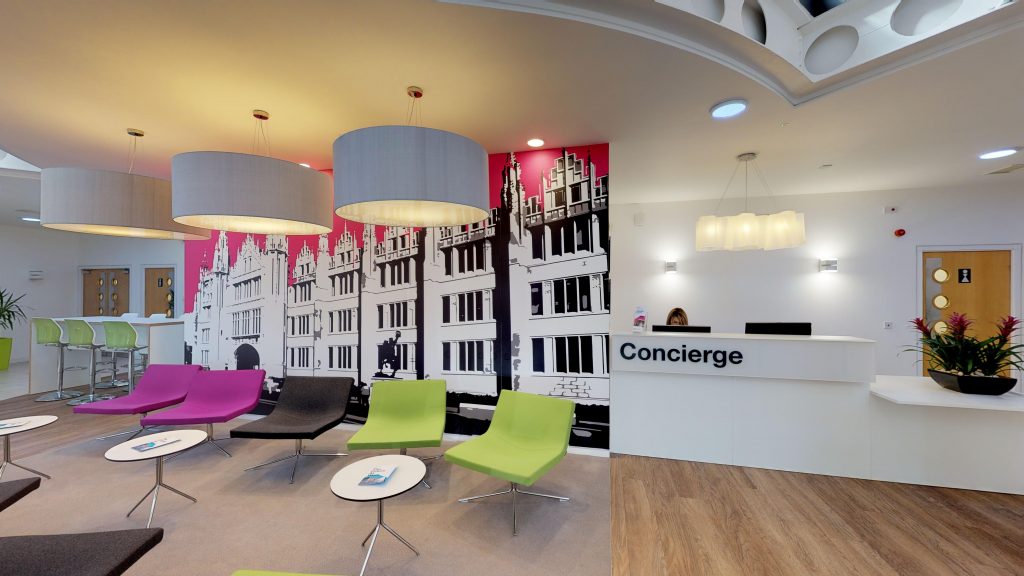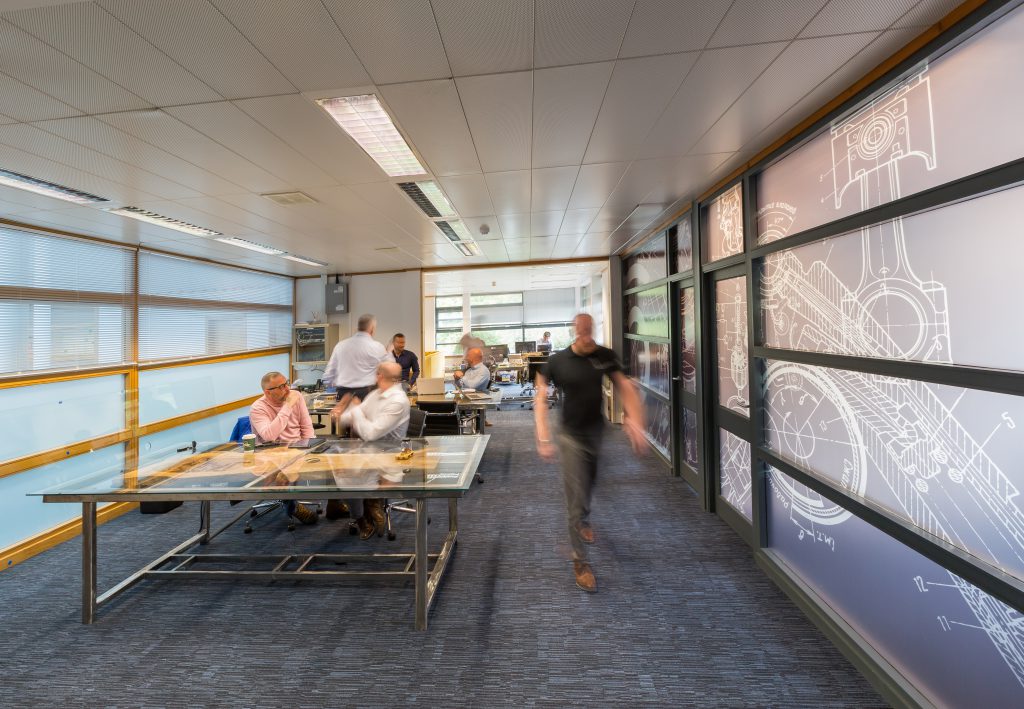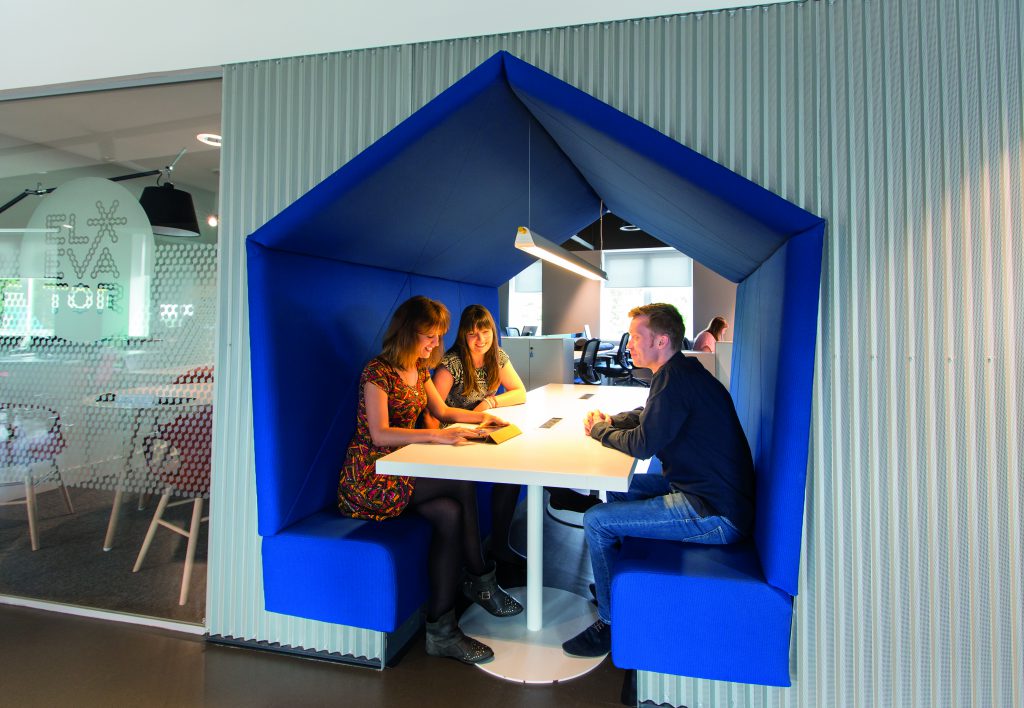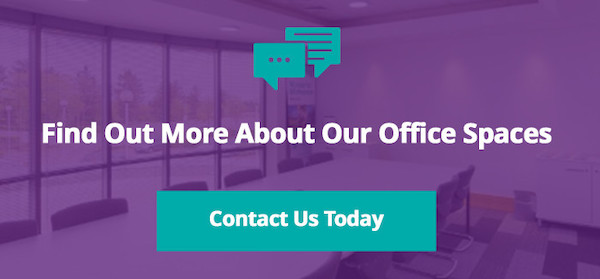How To Choose An Office Space
Choosing and committing to office space can be one of the biggest decisions a business will ever make. It can be a major long-term financial commitment and before making a decision, it is important to give the matter serious thought and consideration. Moving office requires a significant amount of planning and it is important to get it right.

The Key Things To Consider When Choosing An Office Space
Future Requirements - don’t just look at the present, think about what your team, work style and business model will look like in the next 2 - 5 years.
Office Size and Type - Decide if you want a blank canvas to customise to your company style or if you’d rather walk in and start working immediately, with everything taken care of for you.
Location - Think about commuting, parking and accessibility for staff, customers and deliveries. The main office locations in and around Aberdeen include the city centre, Westhill, Dyce and Bridge of Don.
Office Layout - Consider whether you want your space to be entirely open plan, or if you want some private offices, quiet areas and meeting rooms.
Office Facilities - Look for amenities such as kitchen space, breakout areas, showers, and of course great connectivity.
Rent and Terms - Decide how much you can afford and speak to the property manager about lease length and flexible terms.
What Does Your Future Hold?
If your business is planning to expand or downscale operations in the short to medium term, you need to factor this into your considerations.
Business Growth - If your business is growing, you need to consider realistic growth projections. In order to future proof your new office, make sure it either provides the amount of space you’ll potentially require a year or two down the line, or offers the option of adding more space at a later date.
Downsizing - Depending on the economic and global situation, it is prudent to ensure that you also have the flexibility to reduce floorspace.
Hybrid Working - It’s not just about the size of your team but how much space you really need. How many of your team are in the office at any one time? How likely are your working practices to change, either to having more people in the office more often, or to have more time working from home? Use a realistic number to calculate the space you need so that everyone has a desk when they need it, without paying for space you don’t need.

What Type Of Office Does Your Business Need?
Serviced Office - The serviced office solution is becoming increasingly popular, as this offers occupiers a quality, furnished office space, with the added benefit of services like electricity, broadband and telephone all rolled into a single monthly fee. Agreements are normally pretty flexible, which is perfect should you wish to hedge your bets on future business requirements.
A serviced office, also known as a managed office, is the most convenient workspace solution for businesses of any size. You can move into a room in a building or occupy a whole floor, depending on how many people your business needs to accommodate. Most importantly, you can focus on running the business without having to worry about managing the property.
Leased Office Space - Traditional or standard office space involves leasing a building, or a floor or wing of a building, usually on the basis of a cost per square metre or square foot. You will be responsible for supplying your own furniture and equipment as well as dealing with all utilities and services.
The benefit of managing your own office space is that you have the flexibility to arrange it and decorate it to fit your business’s specific working practices and brand style. Many landlords will work with occupiers to design a bespoke lease package which suits your business needs, so it makes sense to discuss your requirements with them, to achieve a degree of flexibility if that is a priority.
Coworking Space - An option which is popular with entrepreneurs, fledgling start-ups, freelancers and tech businesses, coworking provides a desk in a shared space alongside other business people. This option gives a community feel to your workspace, as well as offering a high degree of flexibility.
How Much Space - Ensure you allocate enough office space for the maximum number of people who could be working there. The legal minimum in the UK is 11 cubic metres per person.

Get Your Office Infrastructure Right
Space Planning - Layout of office space is another important consideration, in order to suit business needs. Office layout says a lot about the personality and culture of your business - a smart-looking office can help to attract and retain talent.
When planning space, promoting productivity and encouraging innovation are key objectives. But it is also a good idea to get employees involved in the conversation, in order that they take ownership of the space and feel involved in the process. Open office layouts tend to be most popular, along with a degree of collaborative space along with quiet areas for meetings or video calls.
Many landlords provide the option of a fit-out package with the terms, in order to help you get up and running, so do ask about this
Facilities - Every business needs to be well-connected these days. Access to super fast fibre broadband is one of the most important factors to consider when reviewing office space. It is a prerequisite for businesses, as slow and unreliable internet can have a negative effect on business success. Always choose a well-connected location and ask if this is included within the overall lease package.
Check out the kitchen and toilet facilities, and showers if there are any, and any communal areas such as breakout spaces. Also look for car parking, EV charging and bike storage which can help with staff recruitment and retention.
Local Amenities - What else is available in the surrounding area to enhance work-life balance and again help with employee satisfaction and retention? Are there cafés, shops and gyms nearby?
Accessibility - To be fully inclusive, check if the building is accessible for people with disabilities and if it has ramps or lifts to enable staff and visitors to reach all areas.
Rent & Terms
Before signing any lease, there are a number of factors that you want to take into account.
Rent - How much will you pay every month? Don’t forget utilities, service charges, maintenance costs, insurance, and potential fit-out expenses.If you have a serviced office, check if all of these are included or if there are any extra costs on top of your monthly payment.
Lease Term - Understand the duration of the lease and its start/end dates. Check how much flexibility there is if you want to upsize or downsize during the term or if you decide to move before the end of your lease.
Repairs and Maintenance - Clarify who is responsible for regular maintenance or various types of repairs and budget for these if required. Also ask about who carries out decorating or internal fit-outs and refurbishment and what alterations you are allowed to make to the space.
Subleasing: Check if subleasing is allowed, as it is one way to increase flexibility if your needs change.
We highly recommend getting to know our management team at AEIP as they will be able to tailor your lease to fit as closely as possible to your business needs.
